There is hardly anyone in Bulgaria who does not have warm childhood memories of their grandma’s or mom’s sarmi – Bulgarian stuffed cabbage leaves. This traditional dish is so soft and tasty that it quickly becomes a favorite for festive occasions.
Sarmi is prepared from leaves of fermented cabbage, filled with minced meat and rice, then baked in a clay pot. It is the dish that brings families together around the table, where laughter and joy intermingle with the enticing aromas filling the air.
Scroll down, and let’s uncover the magic of Bulgarian stuffed cabbage leaves together!
Let’s Learn More About Sarmi
When winter comes to Bulgaria, a special cooking tradition starts. This tradition changes simple cabbage into a wonderful ingredient that brings people together. Fermented cabbage, a clever invention from Bulgarian history, becomes the highlight of the season.
This preserved cabbage is made at the beginning of winter and uses cold weather to stay fresh and tasty. It is used in many dishes during the colder months, adding flavor and excitement.
One of these dishes is sarmi, a comforting and tasty example of Bulgarian cooking. Fermented cabbage leaves are filled with a delicious mix of minced meat and rice and a blend of spices that make each bite a treat.
The filled leaves are then placed in a “Guvech,” a large clay pot representing Bulgarian culture. The sarmi bakes slowly inside the pot until it’s cooked just right. After two hours of baking, your dish is ready to eat.
Soft and full of flavor, these stuffed cabbage leaves are a favorite among many. Friends and loved ones come together to enjoy this tasty dish, sharing laughs and good times. The story of sarmi is an important part of Bulgarian culture that keeps on growing.
Kitchen Tools For Cooking Sarmi
Ready to whip up this scrumptious Bulgarian dish? First, let’s take a moment to gather the necessary kitchen tools that will make your cooking experience a breeze.
Necessary Ingredients of Sarmi
The magic of any recipe lies in its ingredients. Here’s a list of the flavorful components you’ll need to whip up delectable sarmi in no time.
Winter’s low temperatures help preserve the cabbage, which can be used in salads and various dishes, including sarmi.
The distinctive sour and salty flavor of fermented cabbage is essential for an authentic taste. If unavailable, boil cabbage leaves gently until softened enough for rolling.
Process To Make Delicious Sarmi
With the ingredients and tools ready, it’s time to dive into the cooking process. Follow these step-by-step directions to bring this recipe to life on your dinner table.
Step 1: Prepare The Filling
Heat up your stovetop pan with 2/3 of the oil and a little water on medium heat. Sauté the finely chopped onion in oil for about 3-4 minutes until fragrant.
Add the minced meat to the stovetop pan, breaking it up with a kitchen turner as it cooks. Continue to cook for about 5-7 minutes, stirring occasionally, until the meat changes color.
Add the paprika, ground black pepper, and dried savory and mix. Continue to cook for about 2-3 minutes, stirring occasionally.
Then add the washed and drained rice and mix again. Continue to cook for another 5 minutes, stirring occasionally.
Add half the amount of water, about 0.4 quarts and mix, cook on the stove and stir regularly. After the water is absorbed by the rice, the rice should have started to soften, the filling is ready, and you can take it off the stove.
Leave the sarmi filling aside to cool, and it’s time to prepare the cabbage leaves for the filling.
Step 2: Prepare The Cabbage Leaves
Carefully separate the cabbage into leaves. You will need a few cabbage leaves to cover the bottom of the baking dish as well as to cover the sarmi on top, so set aside any of the smaller leaves and those that have torn during separation.
Cover the bottom of the baking dish with a little olive oil and half of the remaining water, then arrange a few leaves of the cabbage to cover the bottom. This will prevent the sarmi on the bottom from burning when baking.
Step 3: Shape The Sarmi
Take one cabbage leaf and spread it out on a clean work surface (for example: a large wooden board) with the wider side facing you, as shown in the image.
In the middle of the wide part of the leaf, place a tablespoon of the filling. Then, lift the edge of the leaf closest to you and roll/fold it. Fold first the right side, then the left side inwards, and fold again, as shown in the images.
Repeat these steps with the other leaves, spreading the filling evenly. Use about 1 to 1.5 tablespoons of filling for each leaf. If the cab
Step 4: Bake The Sarmi
Arrange the shaped sarmi in the baking dish. First, cover the bottom, then place a second or third layer on top of the initial layer.
Once you have placed the sarmi in the baking dish, arrange a few cabbage leaves on top. Then pour the remaining olive oil and water over them. Cover with the lid, and they are ready to bake.
Do not preheat the oven to prevent the ceramic pot from bursting from the hot temperature. Put the ceramic pot in the oven, then set it to 356 degrees F.
After the oven heats up, bake the dish for about 2 hours with the lid closed. Then, remove the lid and the cabbage leaves that cover the sarmi. Bake for another 10-15 minutes or until the upper surface is browned.
Step 5: Serve The Dish
After removing them from the oven, let the stuffed cabbages cool for about 10 minutes. Your foods are ready!
Useful Notes And Tips
I’ve compiled a list of handy tips and tricks that will help enhance your cooking experience. Keep these suggestions in mind when you’re making sarmi.
How To Store Your Sarmi Leftovers
Storing sarmi, the delicious Bulgarian stuffed cabbage leaves, is easy. First, let them cool down entirely at room temperature. Once they are cool, gently place them in an airtight container.
Separate the layers with parchment paper or plastic wrap, ensuring they don’t stick together. Close the container with a tight-fitting lid to keep them fresh and prevent unwanted smells. Refrigerate them for up to 3-4 days.
If you’d like to keep your sarmi fresh for longer, freezing is a great option. Put the cooled ones in a freezer-safe container or a heavy-duty freezer bag, remembering to separate the layers with parchment paper or plastic wrap.
Label the date and what’s inside, then pop the container/bag in the freezer. They’ll stay good for up to three months. When you’re craving some sarmi, simply remove them from the freezer and thaw them overnight in the fridge.
To reheat, you can either pop the sarmi in a preheated oven at 350 degrees F (180 degrees C) for 15-20 minutes or use a microwave. If microwaving, place the sarmi on a microwave-safe plate, cover them, and heat for a few minutes. Make sure to check on them and adjust the time as needed.
Some Variations To Explore
Why not change the recipe and try something new? These exciting variations offer fresh ideas and inspiration for putting your own twist on this classic dish, ensuring it never gets old.
Experience the Flavors of Bulgaria With Sarmi
Dive into the world of Bulgarian cuisine and treat yourself to this delicious and satisfying sarmi recipe. Whether you’re an experienced home chef or someone looking to discover new flavors, this dish is a perfect choice.
I’d be thrilled to hear about your experience with this classic Bulgarian recipe! Did you change the ingredients in any way or find a side dish that goes perfectly with your delight? Please leave your thoughts and feedback below!
If you find this recipe enjoyable, I hope you can like and share it with other food lovers, so they can also savor the incredible taste of Bulgarian sarmi!
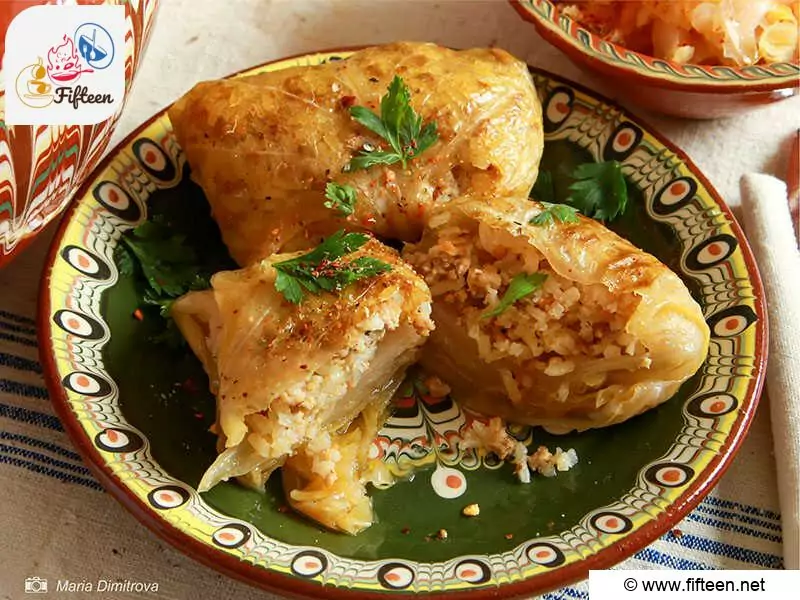
Sarmi Recipe (Bulgarian Stuffed Cabbage Leaves)
Equipment
- Clay pot with lid or ceramic casserole with lid
- Stovetop pan – large size
- Kitchen turner
- Cutting Board
- Spoon
Ingredients
- 1.1 pounds minced meat
- 0.5 pounds white rice
- 1 medium-sized fermented cabbage
- 1 onion
- 5 fluid ounces of olive oil
- 0.5 teaspoon dried savory
- 0.5 teaspoon ground black pepper
- 1 teaspoon paprika
- 0.8 quarts of water
Instructions
- Heat up your stovetop pan with 2/3 of the oil and a little water on medium heat. Sauté the finely chopped onion in oil for about 3-4 minutes until fragrant.
- Add the minced meat to the stovetop pan, breaking it up with a kitchen turner as it cooks. Continue to cook for about 5-7 minutes, stirring occasionally, until the meat changes color.
- Add the paprika, ground black pepper, and dried savory and mix. Continue to cook for about 2-3 minutes, stirring occasionally.
- Then add the washed and drained rice and mix again. Continue to cook for another 5 minutes, stirring occasionally.
- Add half the amount of water, mix, cook on the stove and stir regularly. After the water is absorbed by the rice, the rice should have started to soften, take it off the stove.
- Leave the Sarmi filling aside to cool. Carefully separate the cabbage into leaves. Set aside any of the smaller leaves and those that have torn during separation.
- Cover the bottom of the baking dish with a little olive oil and half of the remaining water. Arrange a few leaves of the cabbage to cover the bottom.
- Take one cabbage leaf and spread it out on a clean work surface with the wider side facing you.
- In the middle of the wide part of the leaf, place a tablespoon of the filling. Then, lift the edge of the leaf closest to you and roll/fold it. Fold first the right side, then the left side inwards, and fold again.
- Repeat these steps with the other leaves, spreading the filling evenly. Arrange the shaped Sarmi in the baking dish. First, cover the bottom, then place a second or third layer on top of the initial layer.
- Arrange a few cabbage leaves on top. Pour the remaining olive oil and water over them. Cover with the lid, and they are ready to bake.
- Do not preheat the oven to prevent the ceramic pot from bursting from the hot temperature. Place the ceramic pot in the oven, then set it to 356 degrees F. Bake covered for 2 hours. Uncover, remove cabbage leaves, and bake 10-15 minutes more until Sarmi are browned.
- Let the stuffed cabbages cool for about 10 minutes.
- Your sarmis are ready!
Video
Notes
- The cooking time above is based on 8 to 10 servings of sarmi.
- Opt for a fresh, large head of cabbage with tender leaves that are easy to roll. Savoy cabbage is a great choice.
- Trim the tough stem or central vein from each cabbage leaf before stuffing to make them more pliable and easier to roll.
- Be mindful not to overstuff the cabbage leaves, as the filling (especially rice) may expand during cooking, causing the rolls to break apart.
- Ensure that the sarmis are rolled tightly and uniformly to help them cook evenly and prevent the filling from falling out.
- When placing the sarmi in the baking dish, position them seam-side down to keep them from unraveling during cooking.
- If using fermented cabbage, be cautious with the amount of salt added, as the cabbage may already be salty. Taste and adjust accordingly.
- Cook the sarmi at low to moderate heat to ensure they cook evenly and the flavors meld together.


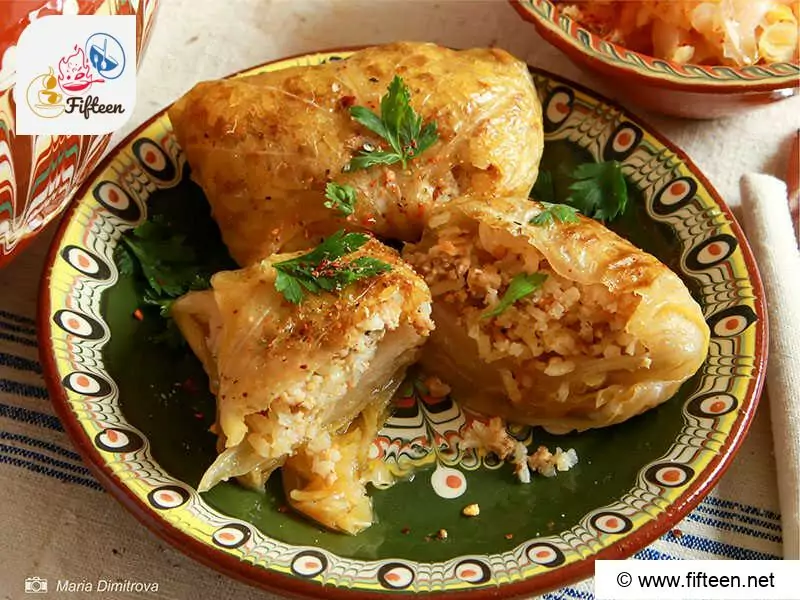
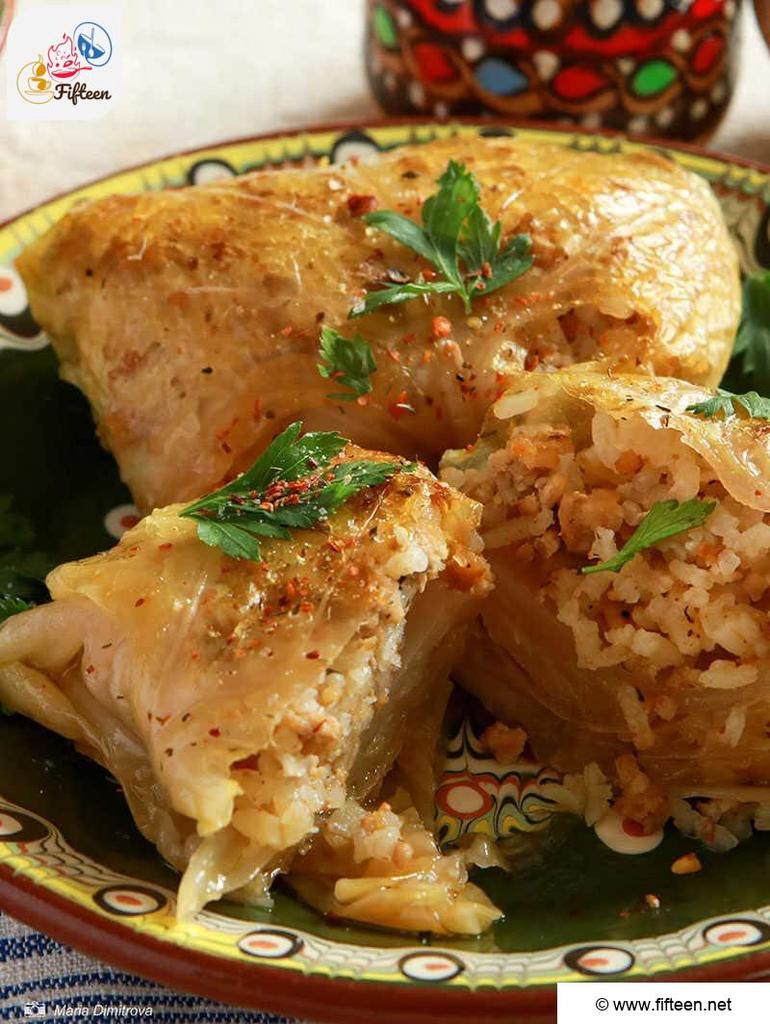
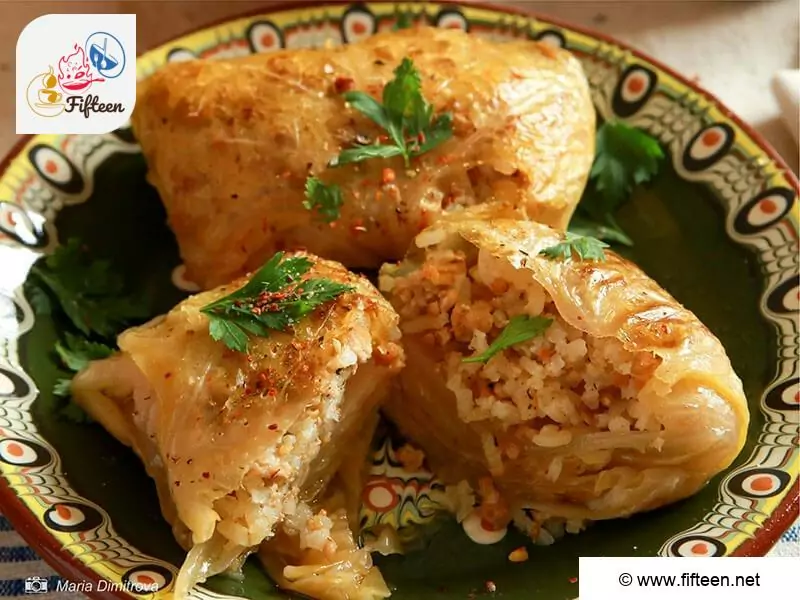
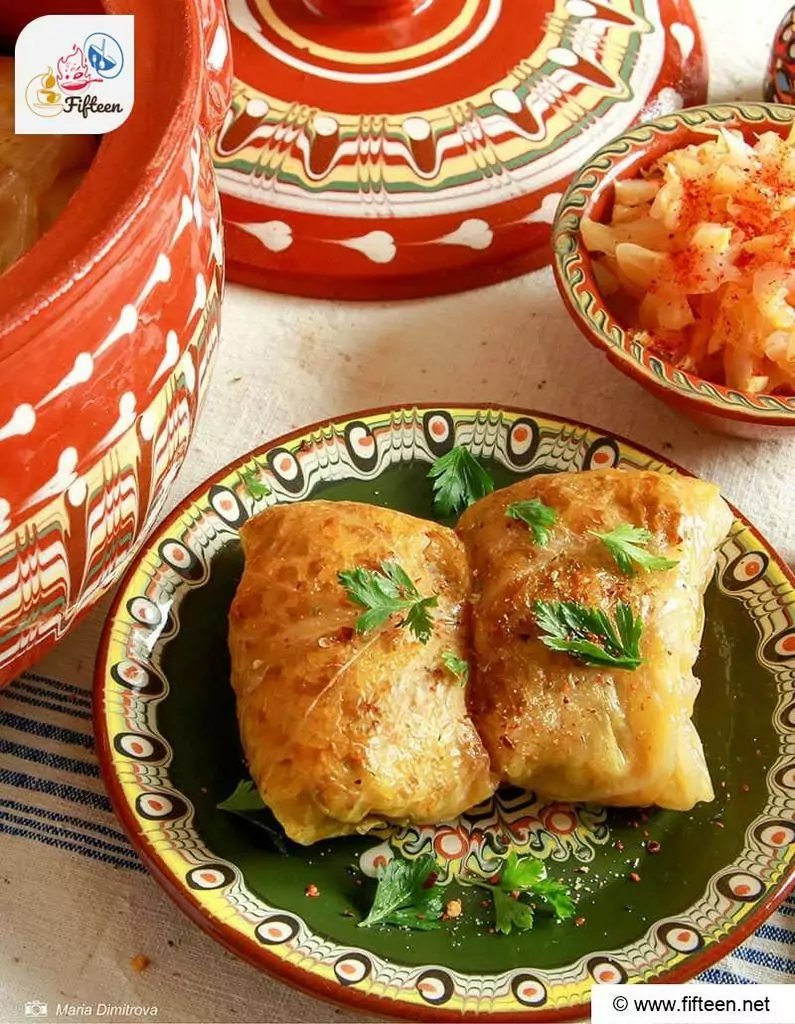
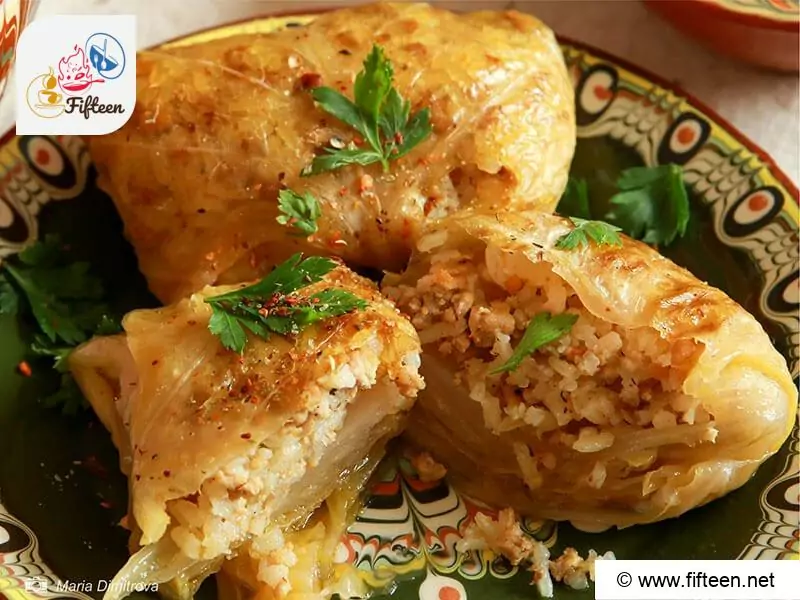
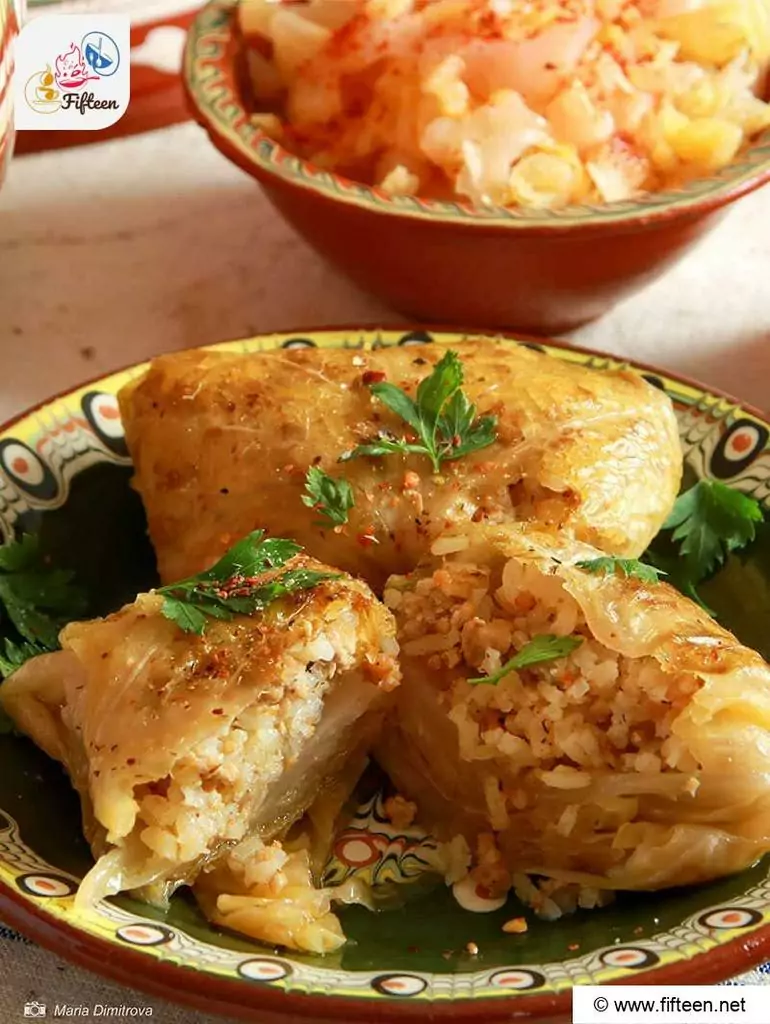
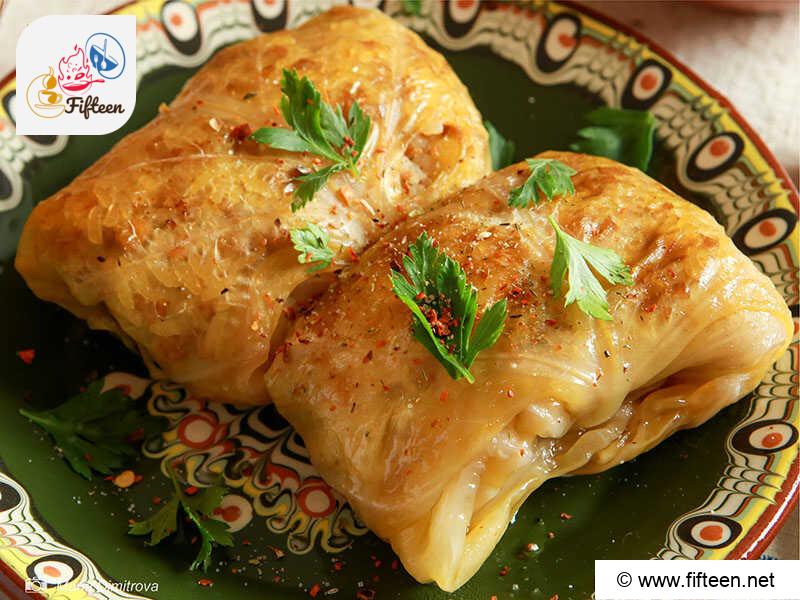
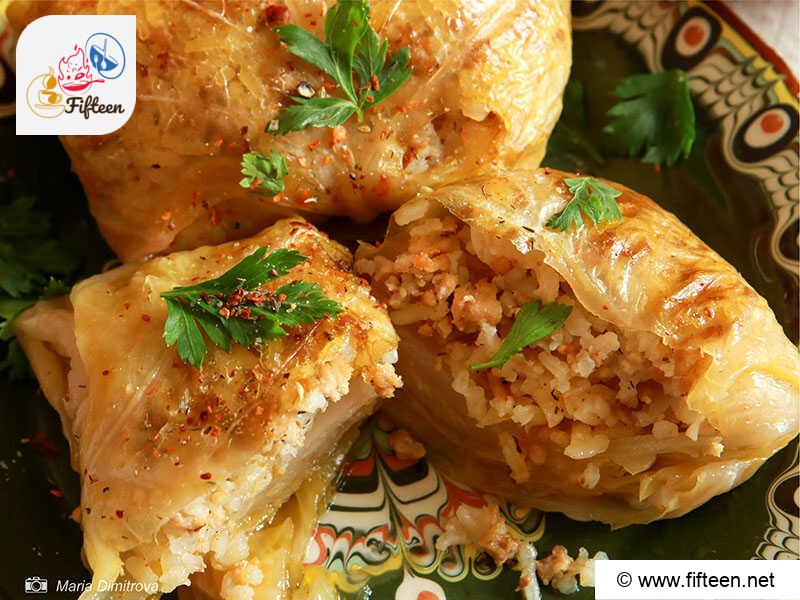
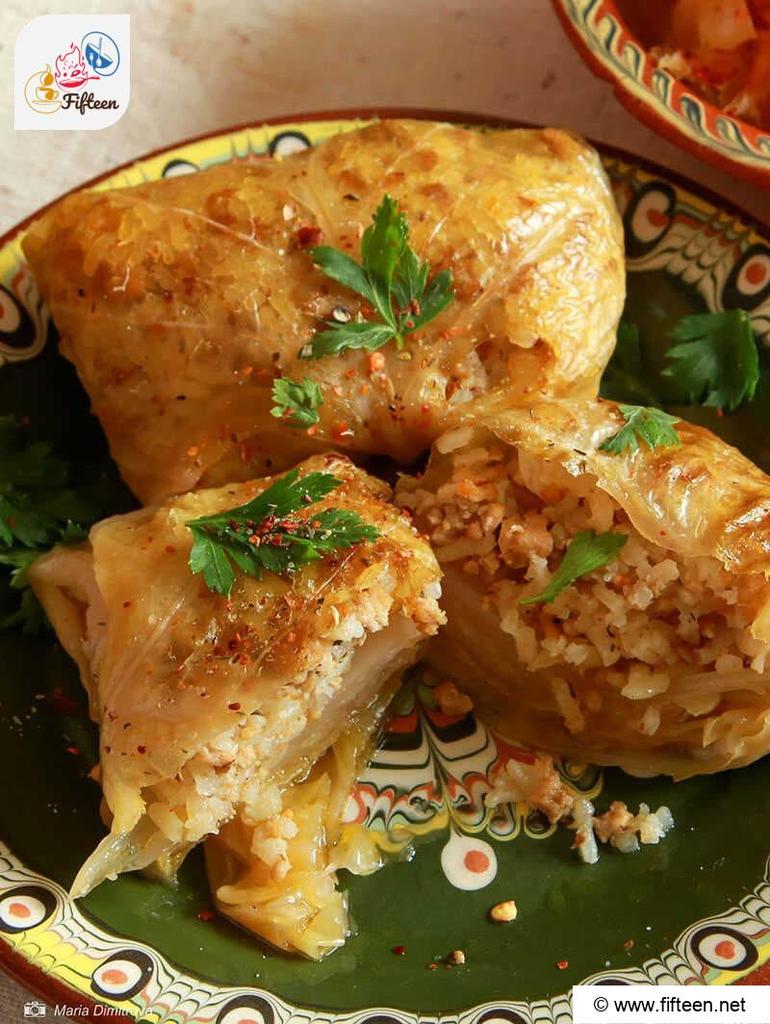
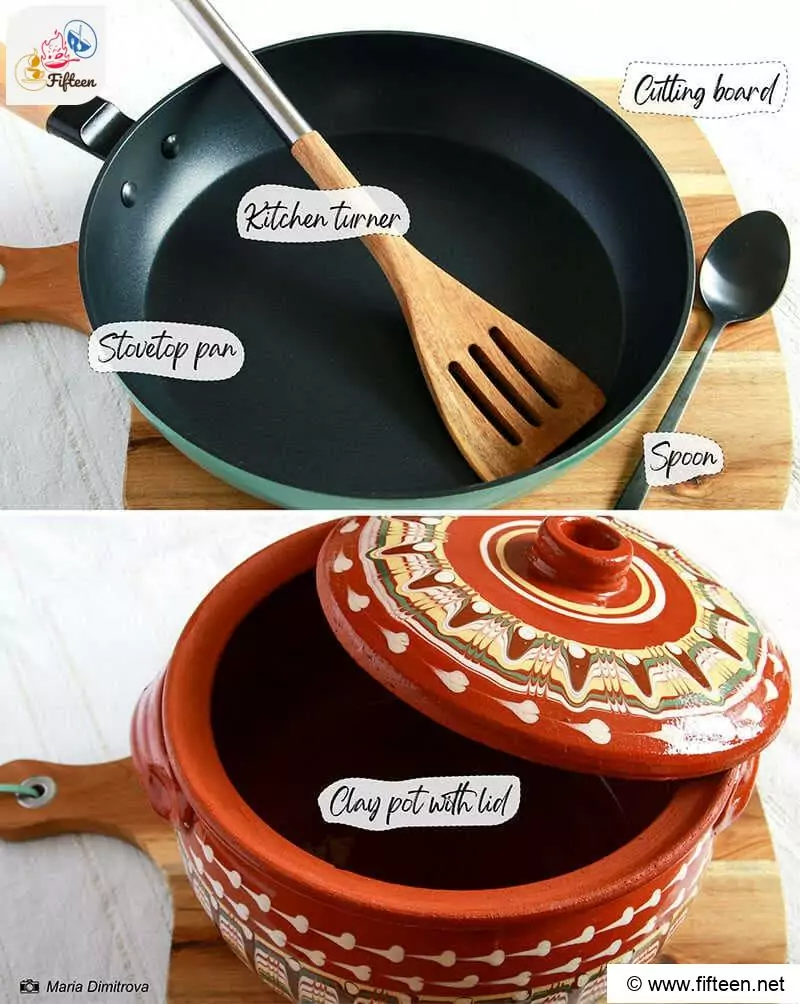
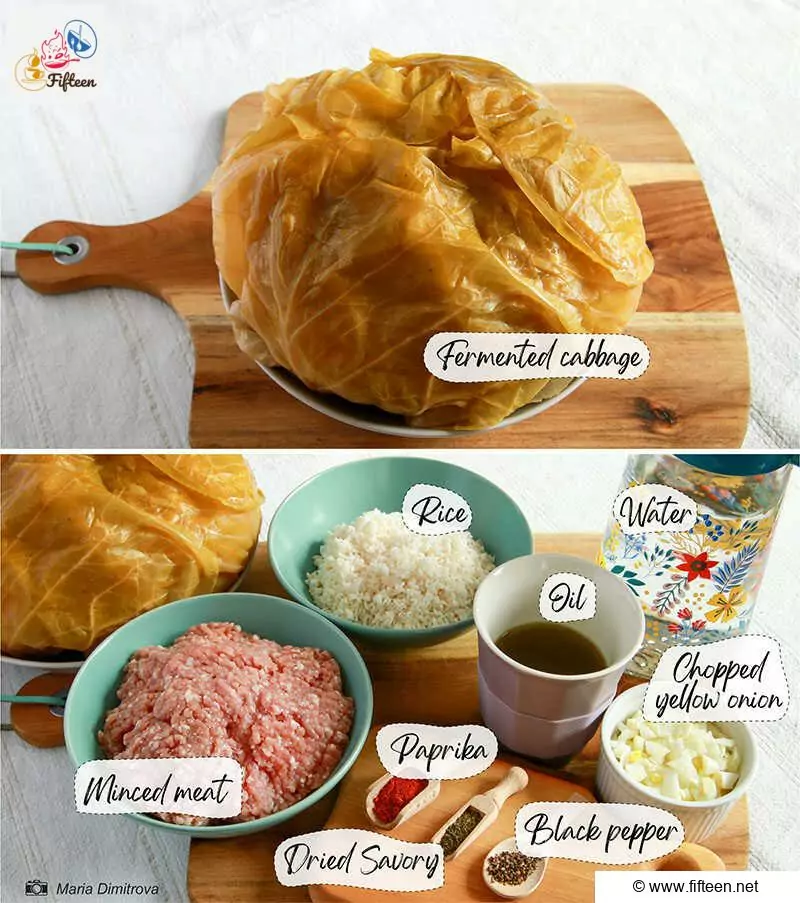
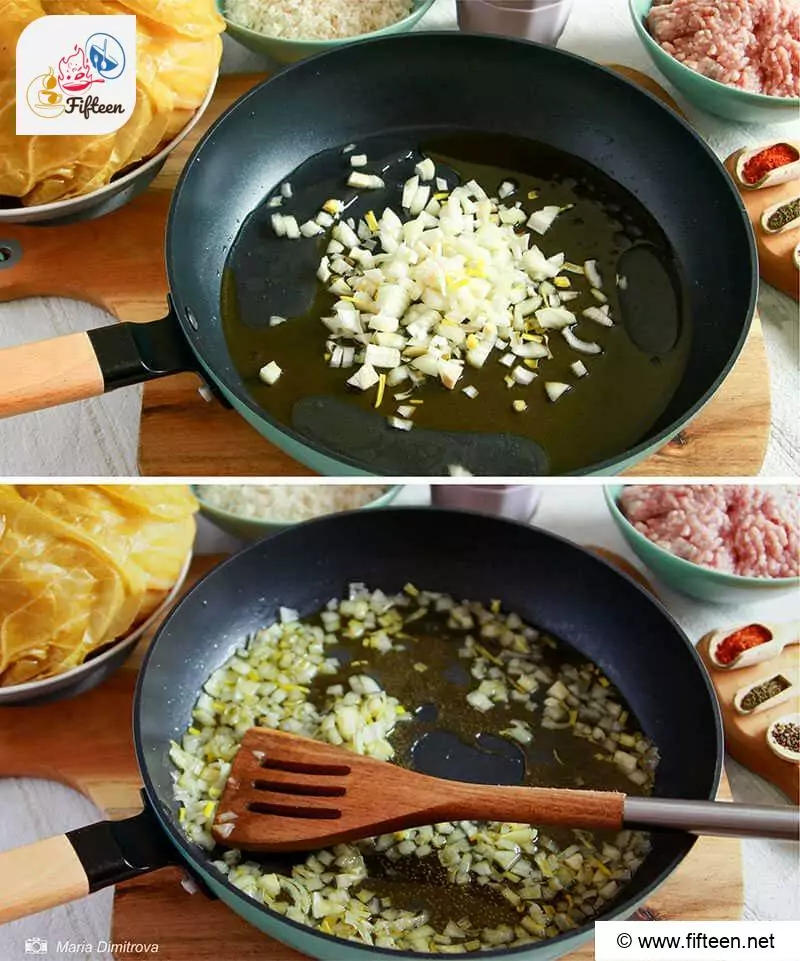
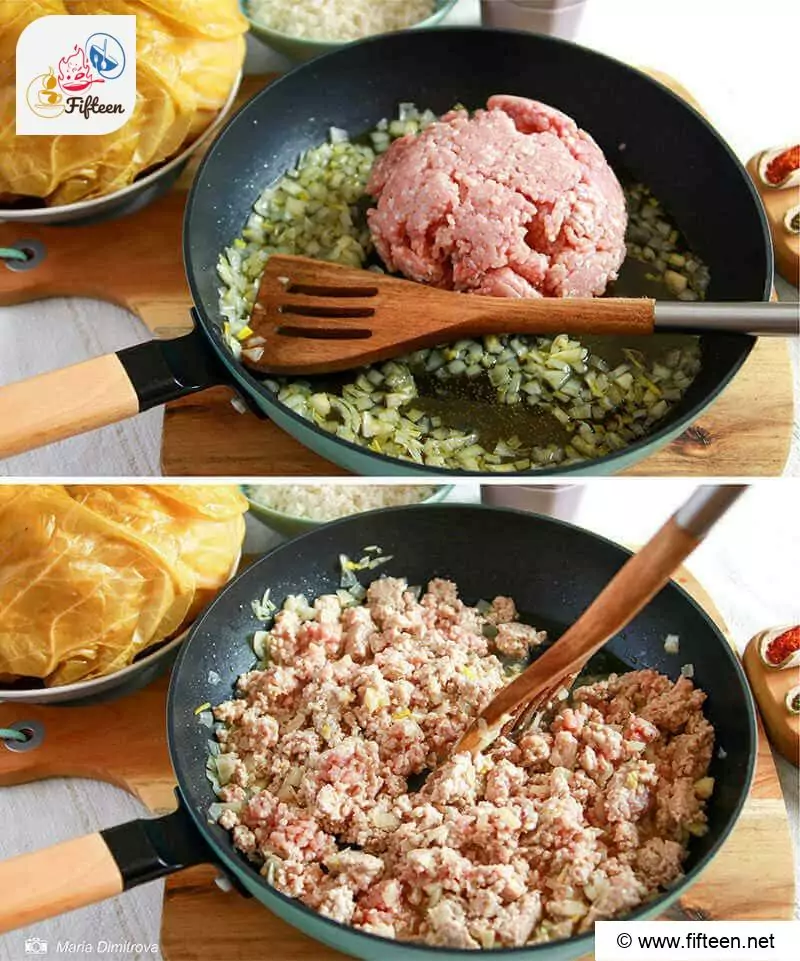
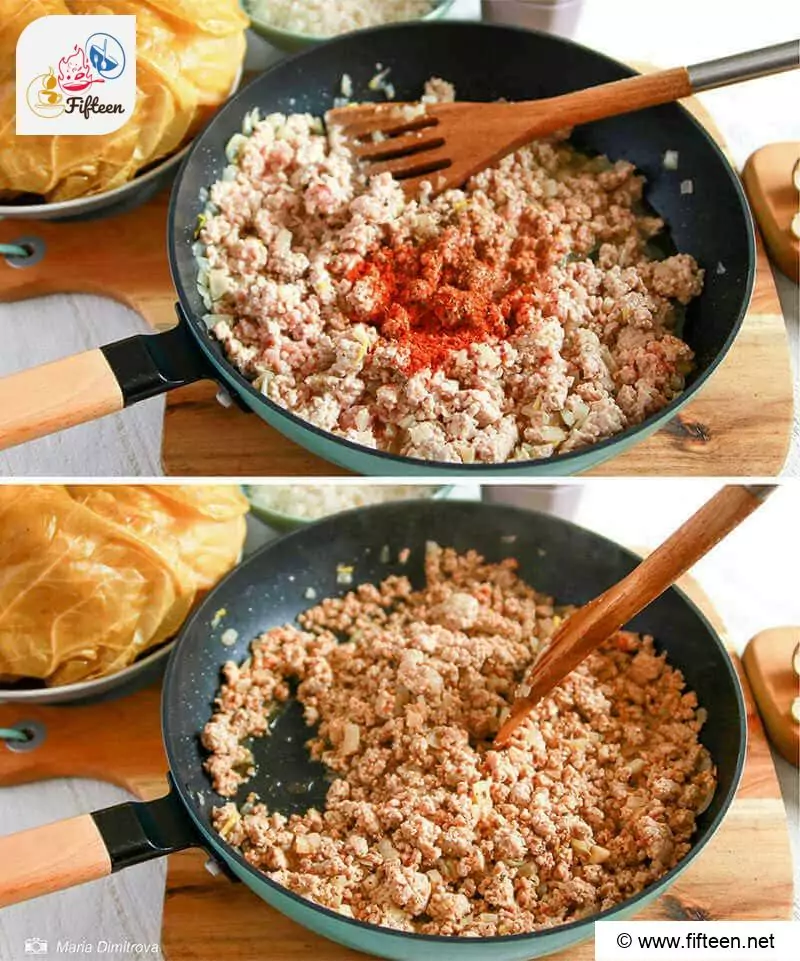
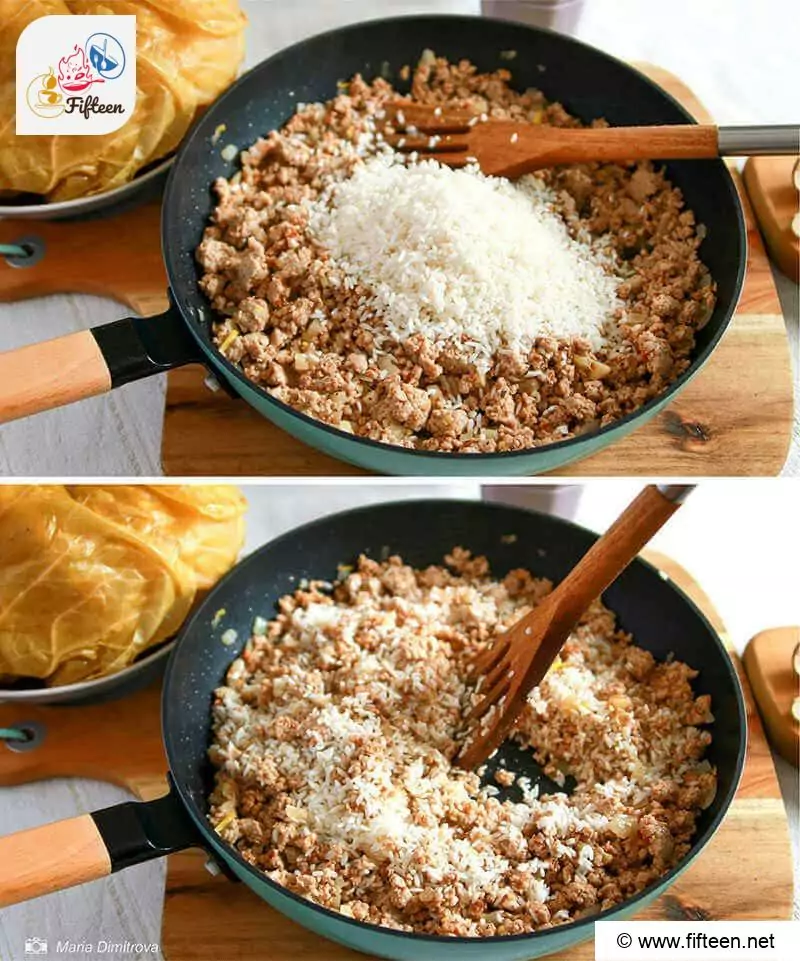
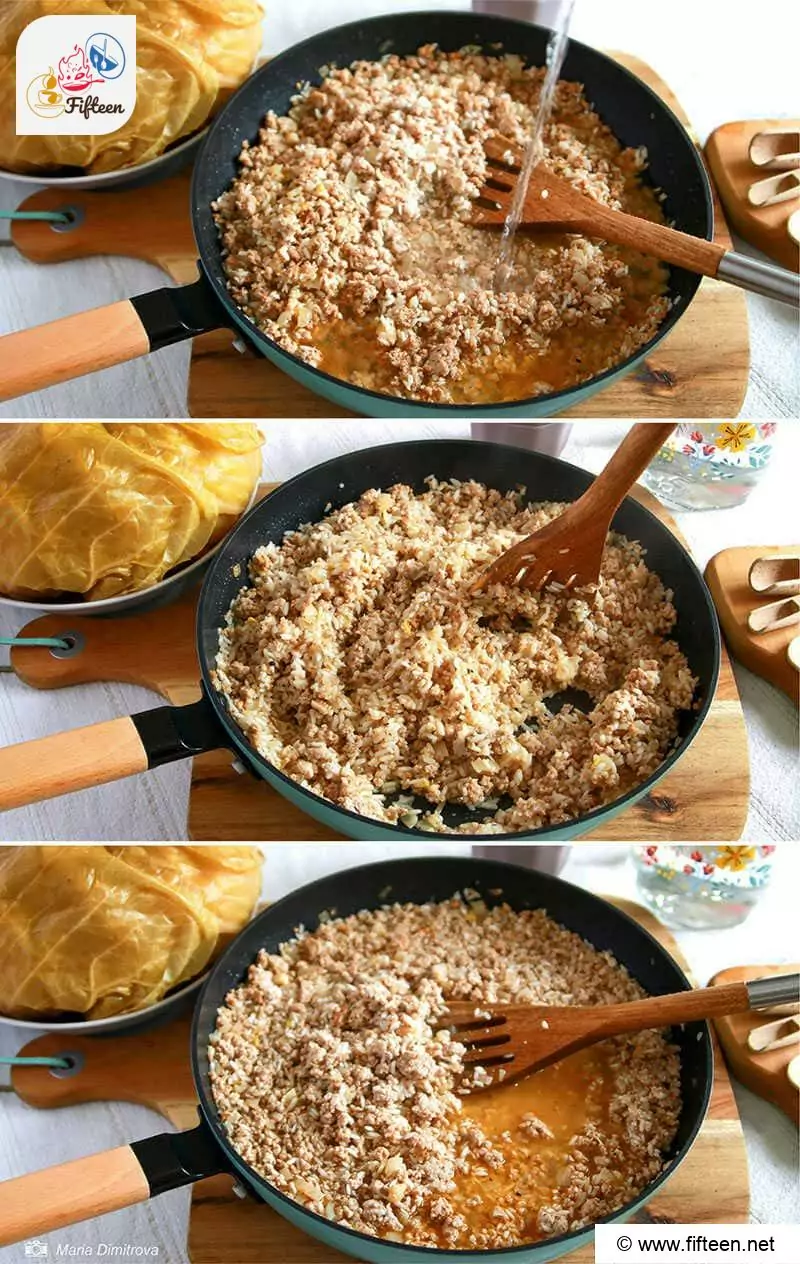
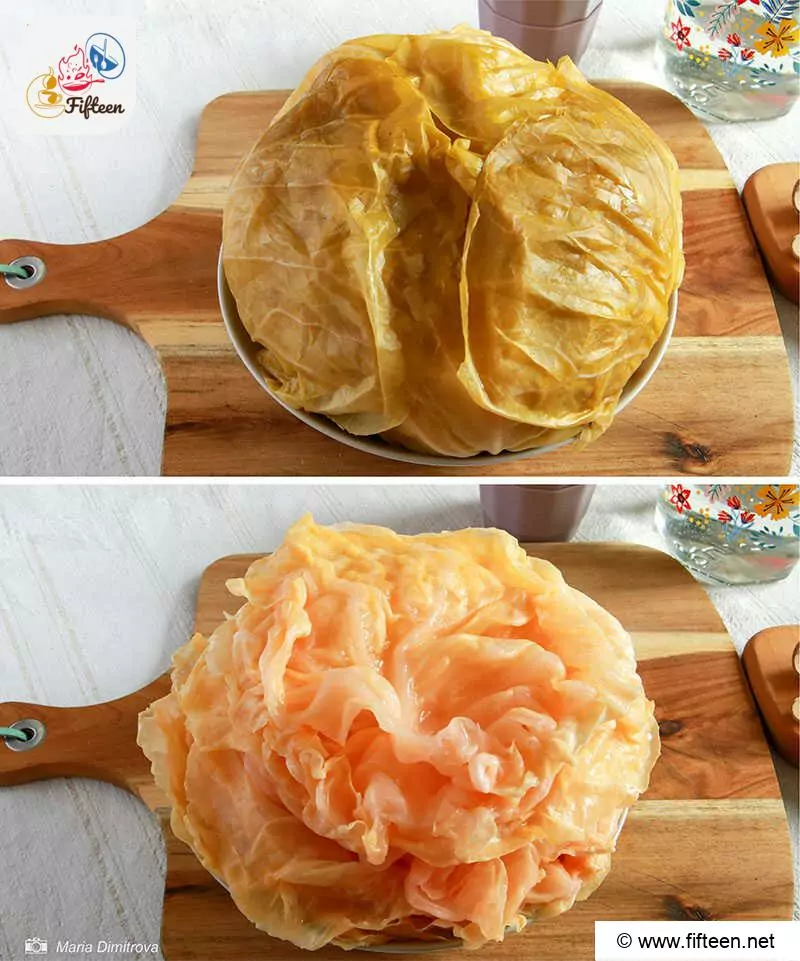
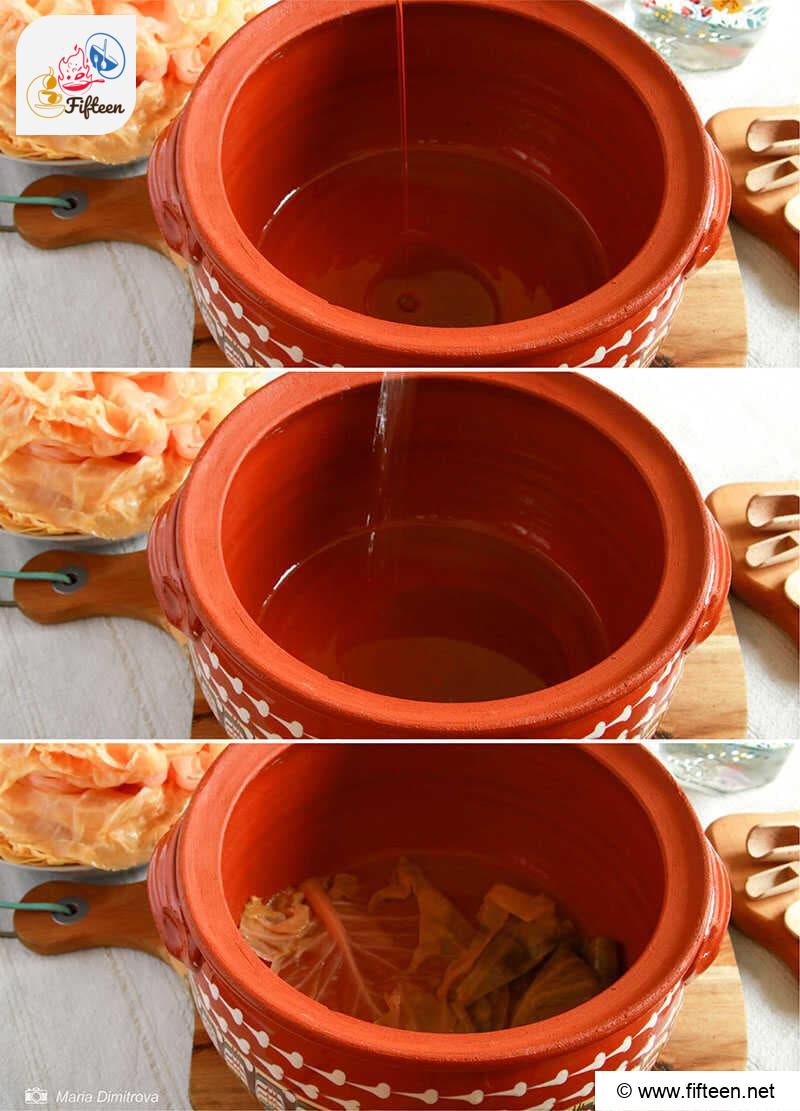
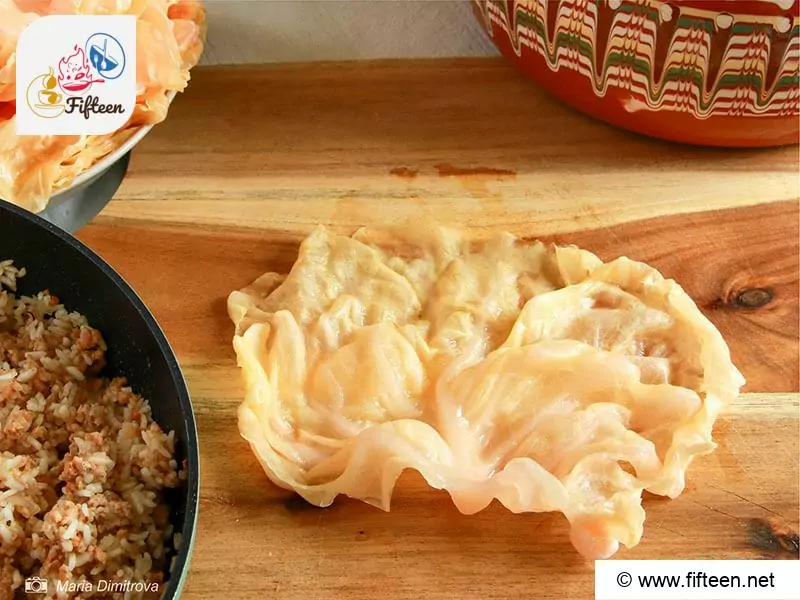
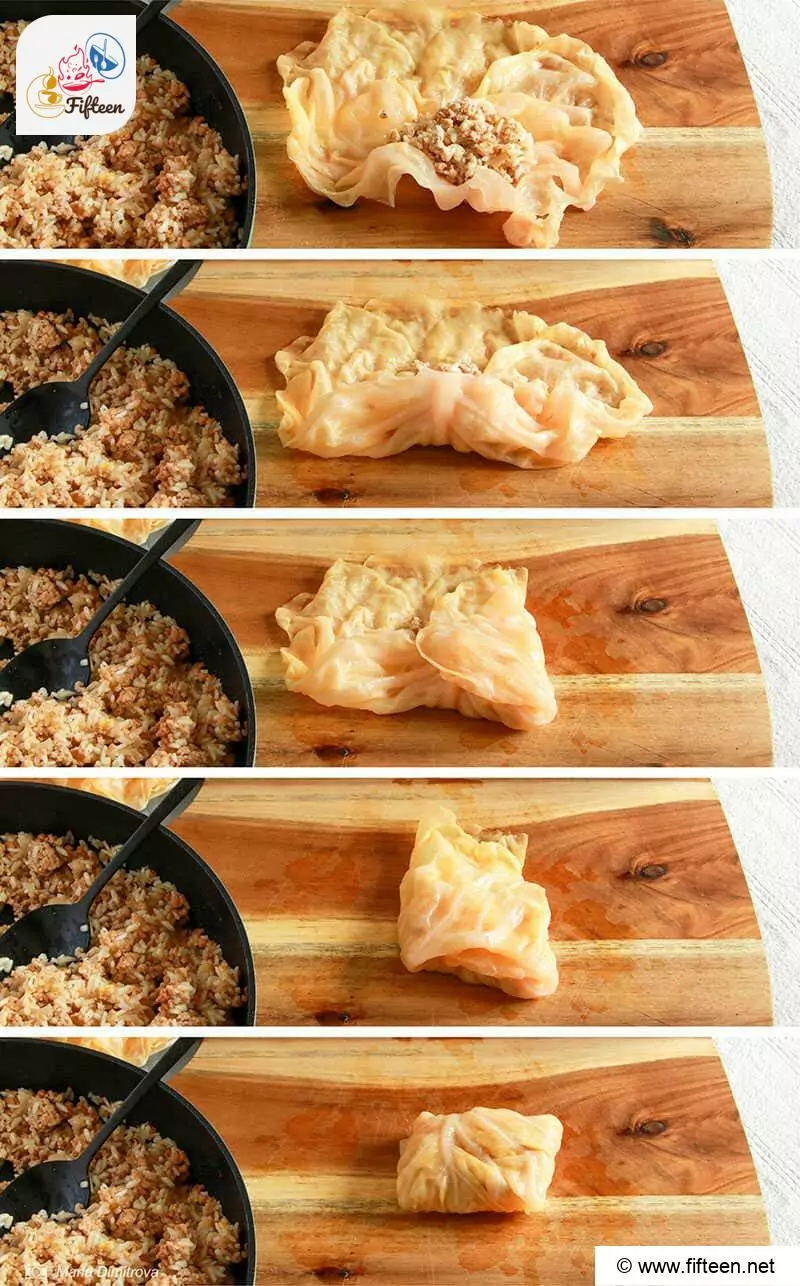
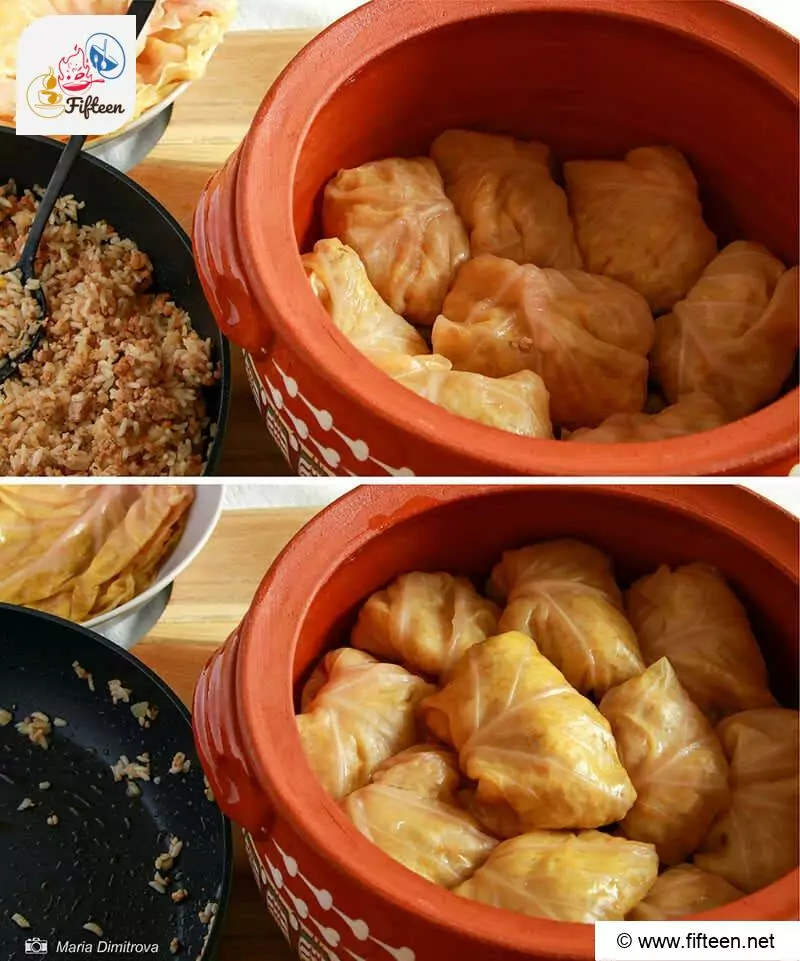
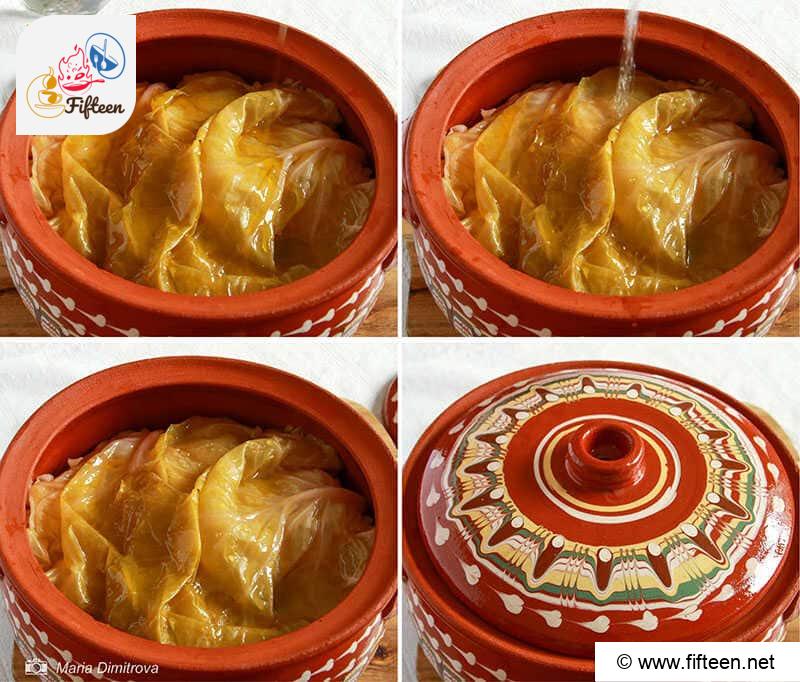
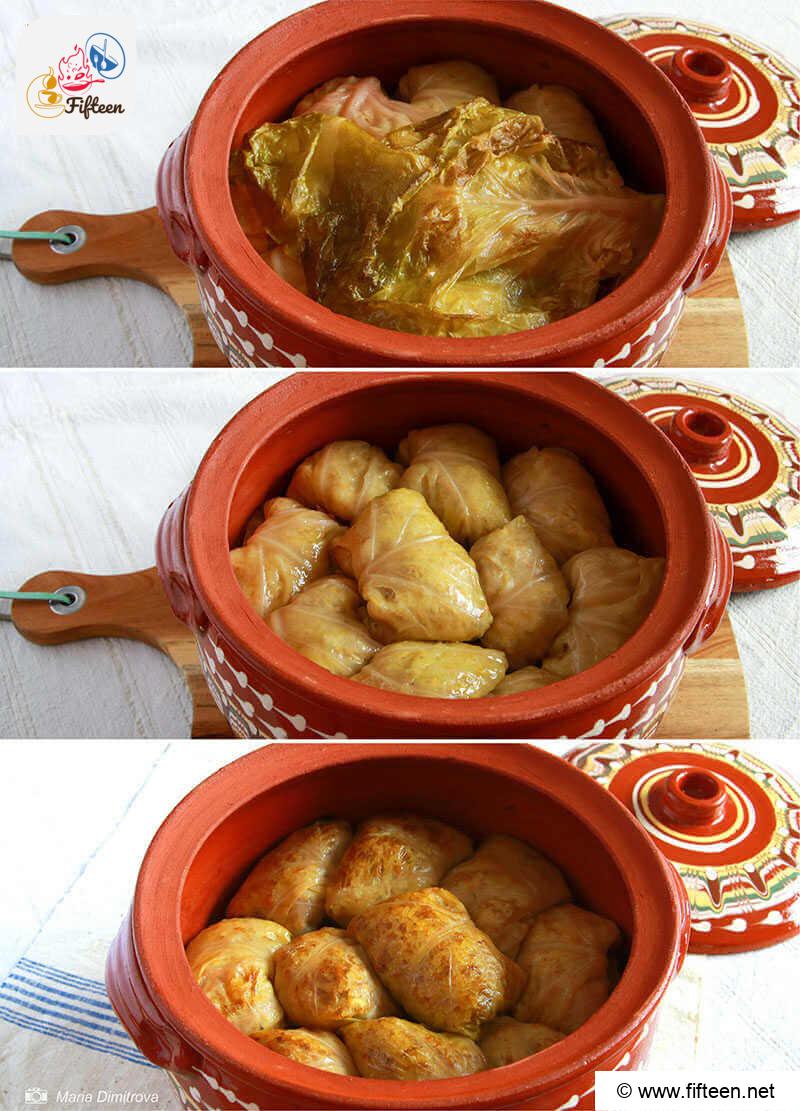
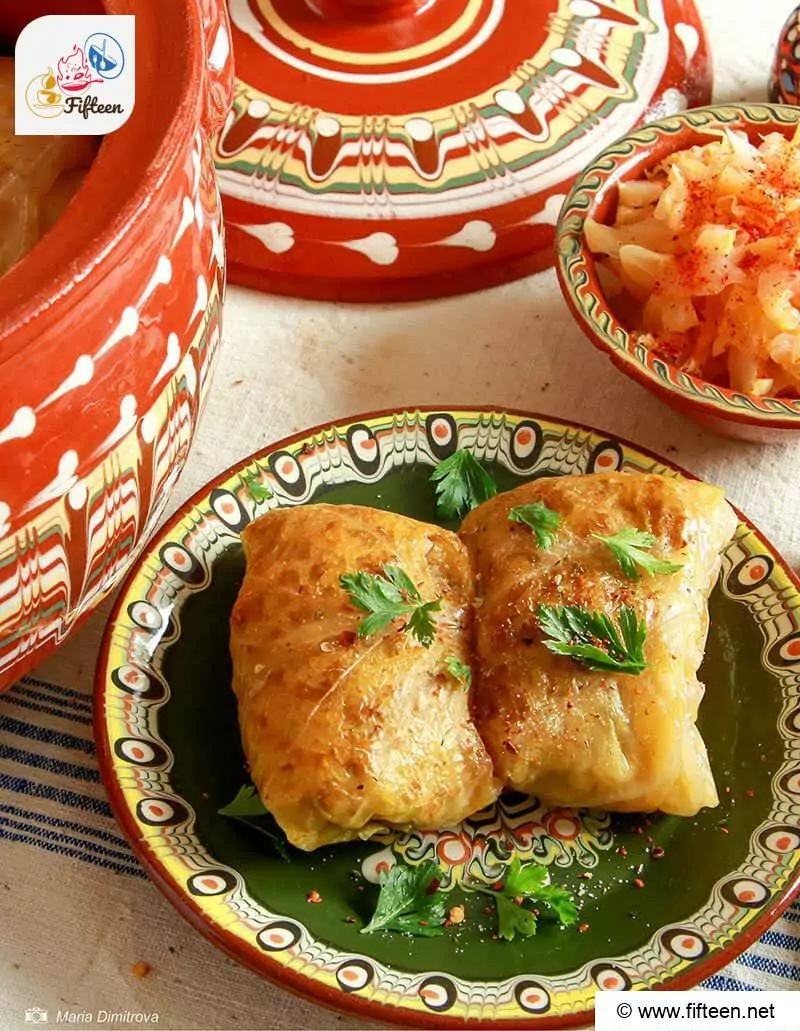
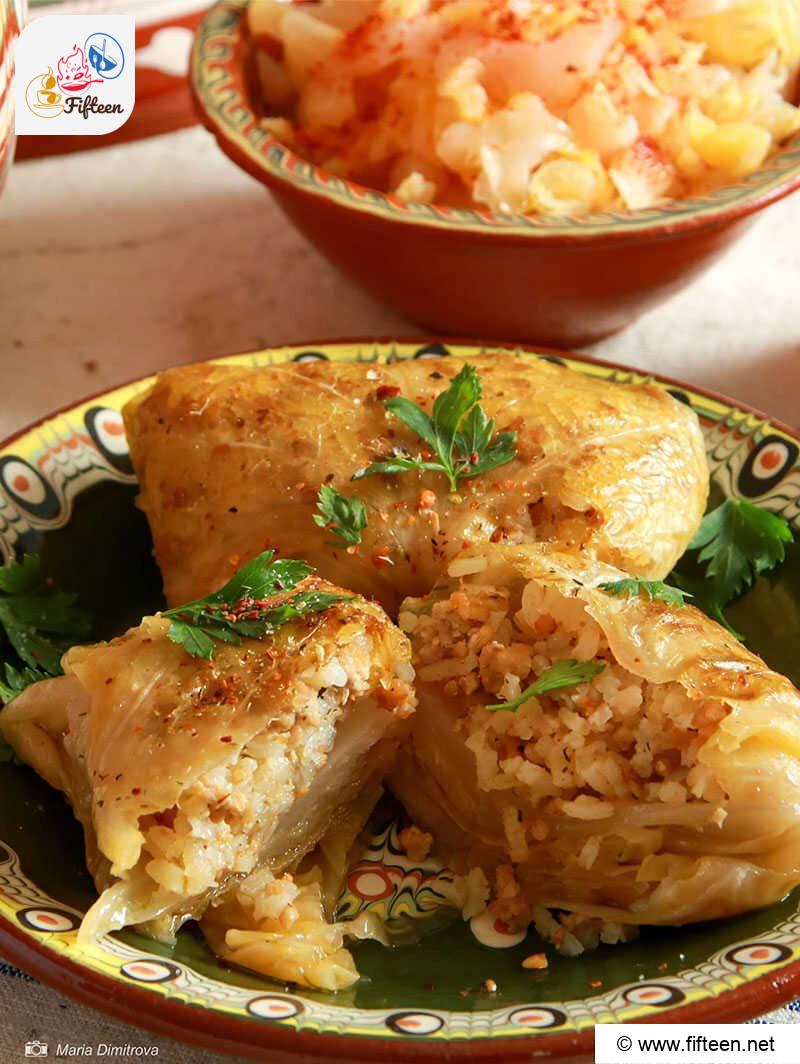
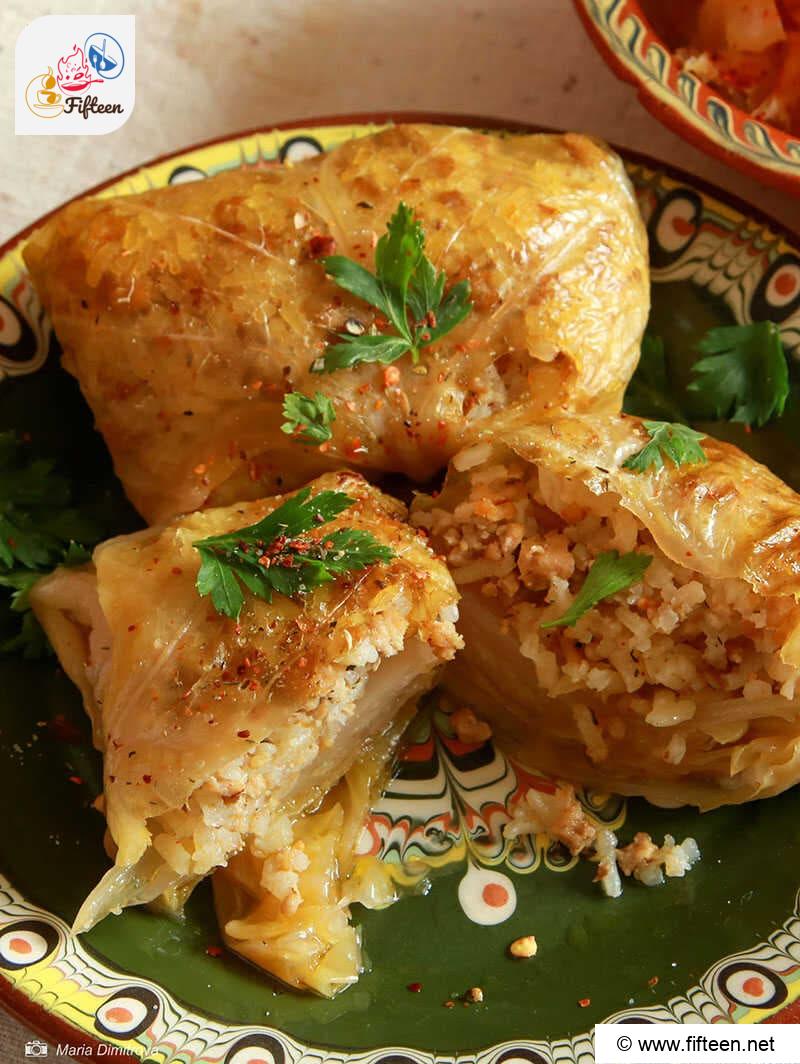
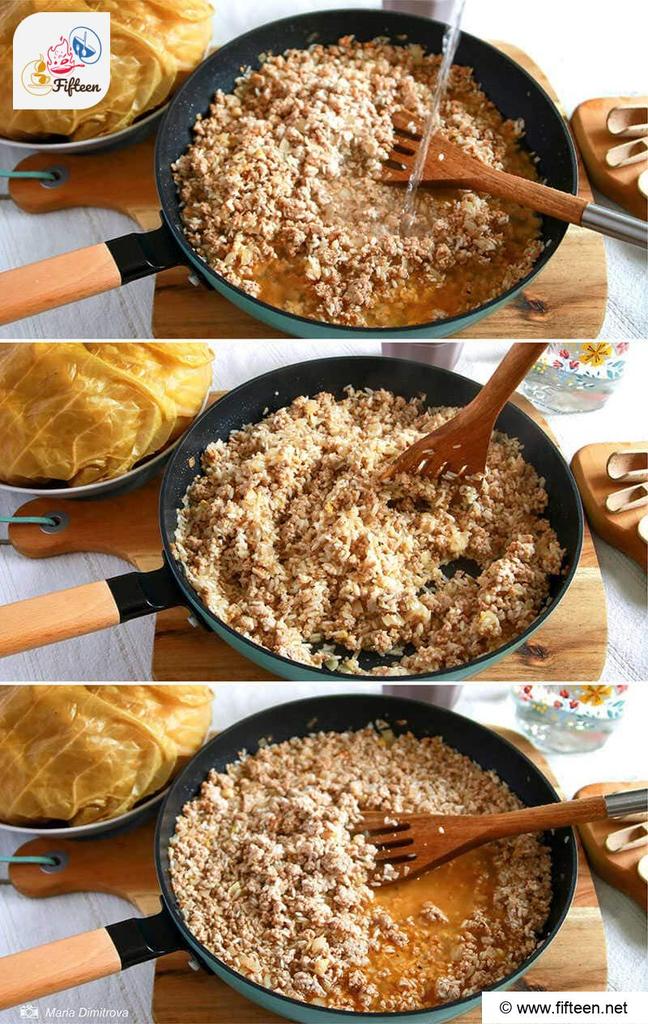
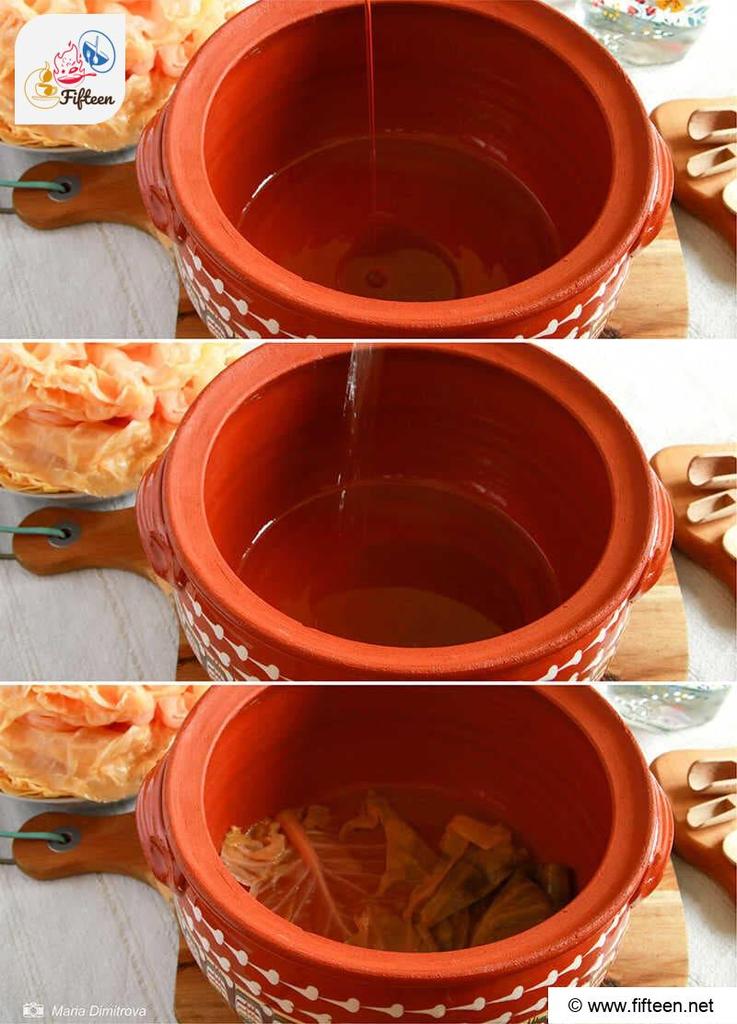
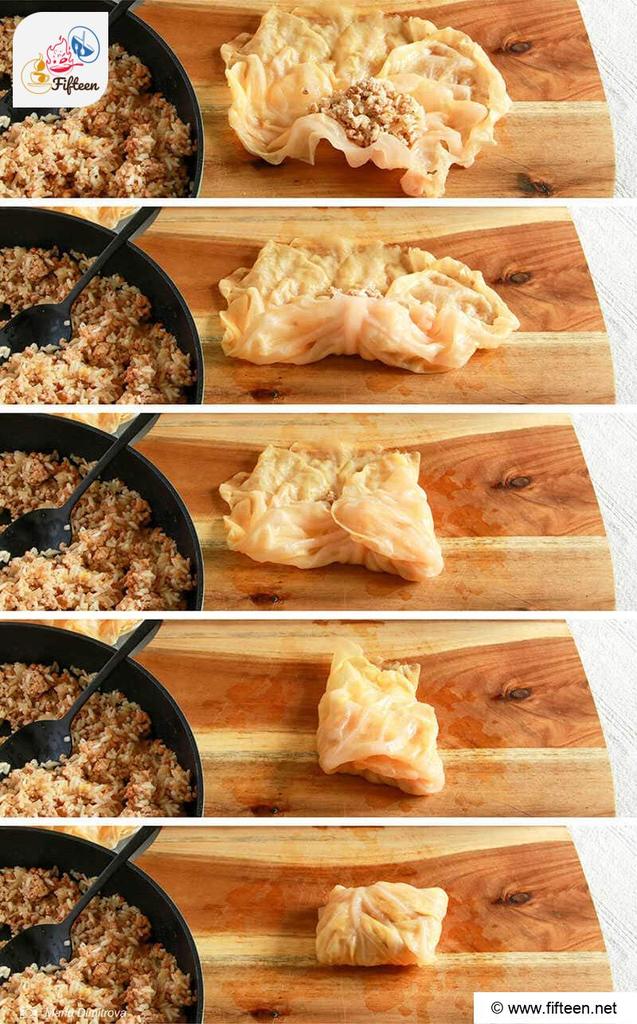
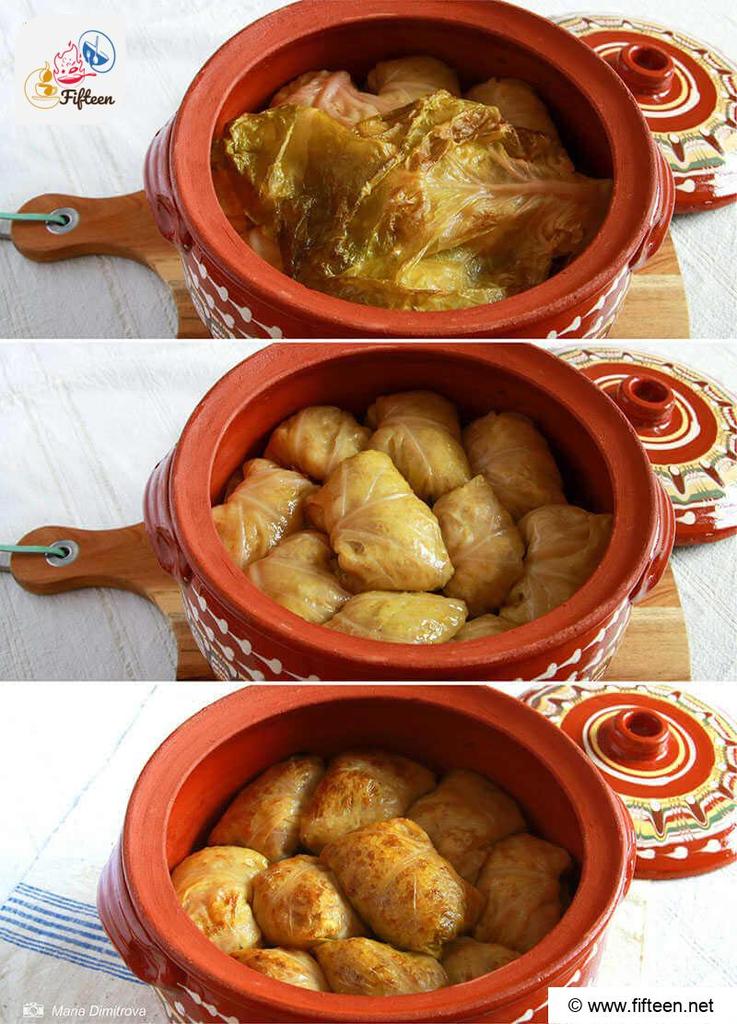
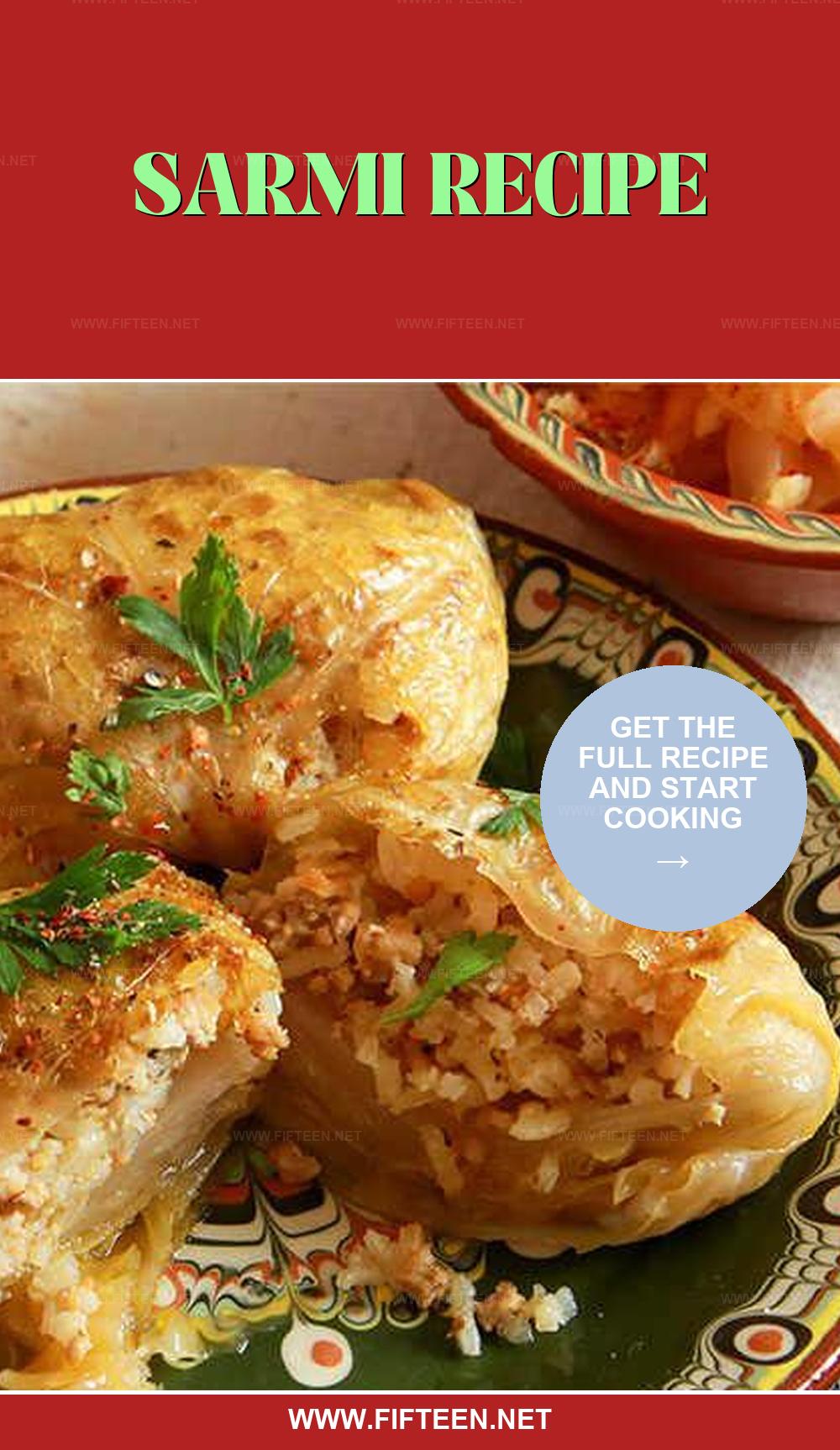
Mia Dimitrova
Content Writer
Expertise
Home Cooking, Meal Planning, Food Styling, Food Photography, Culinary Storytelling, Cooking-video Maker, European Food Content Creator, Bulgarian Food Evaluation Expert
Education
Sofia University “St. Kliment Ohridski”
Completed a thesis titled “Bulgaria on a Plate: A Photographic Journey through our Gastronomic Legacy.”
European Culinary Arts Academy
Maria Dimitrova, or Mia, is a Contributing Writer from Sofia, Bulgaria. Her work beautifully intertwines the rich flavors of Bulgarian and European dishes with their visual storytelling, capturing the soul of each cuisine. Through engaging content and stunning photography, Maria explores the intricate relationship between food’s aesthetic appeal and cultural history.
Specializing in home cooking, food styling, and photography, she brings European culinary traditions to life, offering a unique glimpse into Bulgaria’s gastronomic heritage. Maria’s expertise highlights her deep appreciation for culinary art and invites her audience to embark on a flavorful journey through Europe’s diverse food landscape.